Some research activities
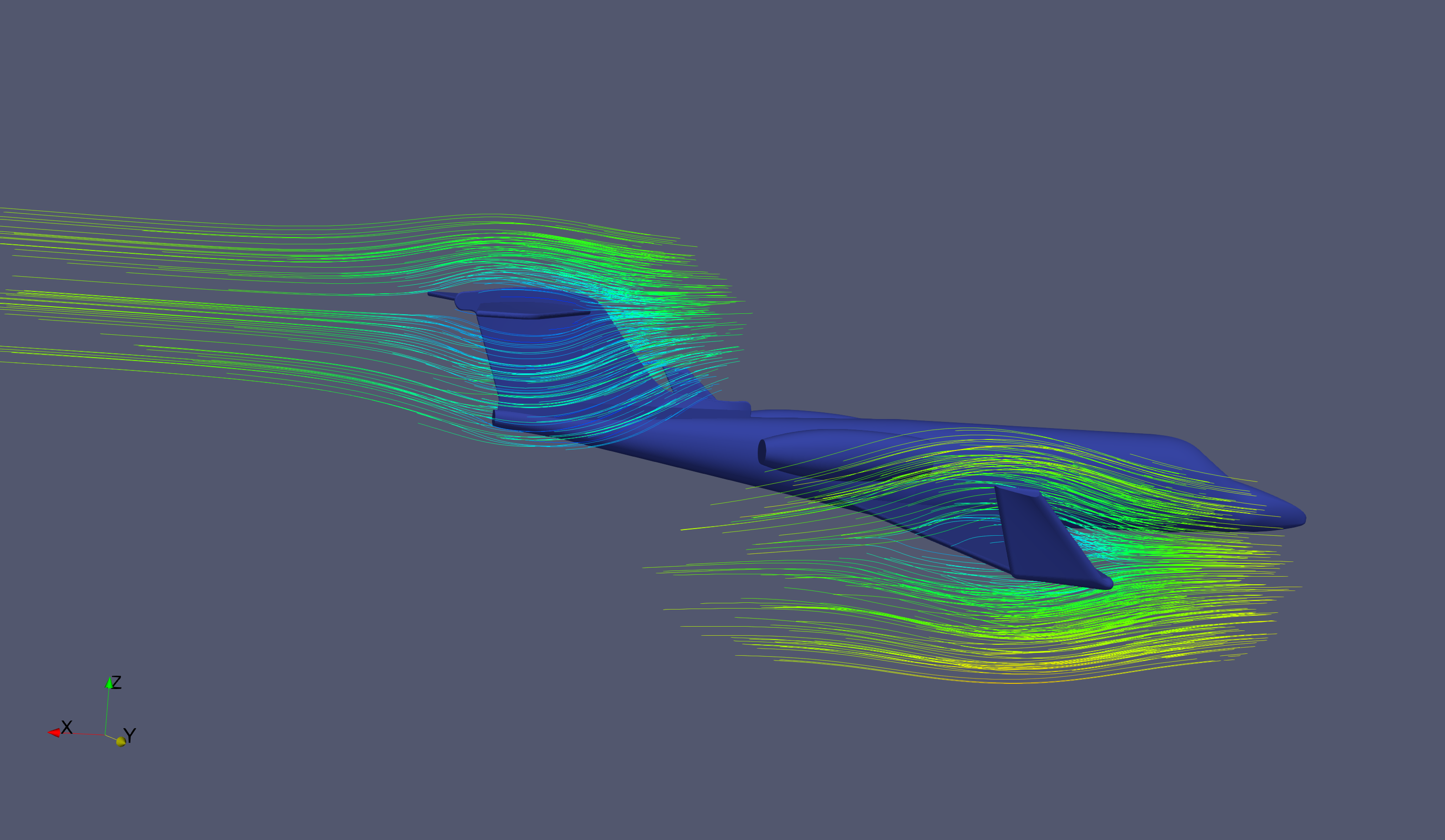
|
At the heart of all viscous incompressible flow simulators is an efficient and accurate Stokes solver. Our research yielded new finite element methods for Stokes flow with structure preservation properties of exact mass conservation and pressure robustness (robustness with respect to the Reynolds number). In addition they yield (without postprocessing) accurate approximations for the fluid's viscous stress, pressure, and vorticity. To approximate viscous stresses, we developed new tensor-valued finite elements with continuous shear (normal-tangential) components. Papers: [2023], [2020], [2019]. |
|
Microstructured optical fibers such as photonic bandgap fibers and antiresonant fibers show great potential for low-loss light flow. They guide energy in leaky modes, also known as quasi-normal modes or resonances. Even though accuracy in computation of confinement losses of leaky modes is of considerable practical importance, it is often hard-won. We have approached this computation using a frequency-dependent perfectly matched layer (PML) and high order finite element discretizations. The discretization results in a polynomial eigenproblem. Our techniques have uncovered surprising variability in confinement losses with respect to modeling approaches and geometrical parameters. We have developed automatic self-adaptive algorithms that allocate degrees of freedom where needed most to capture fine scale modal features and confinement losses accurately. Papers: [2025], [2023], [2022]. |
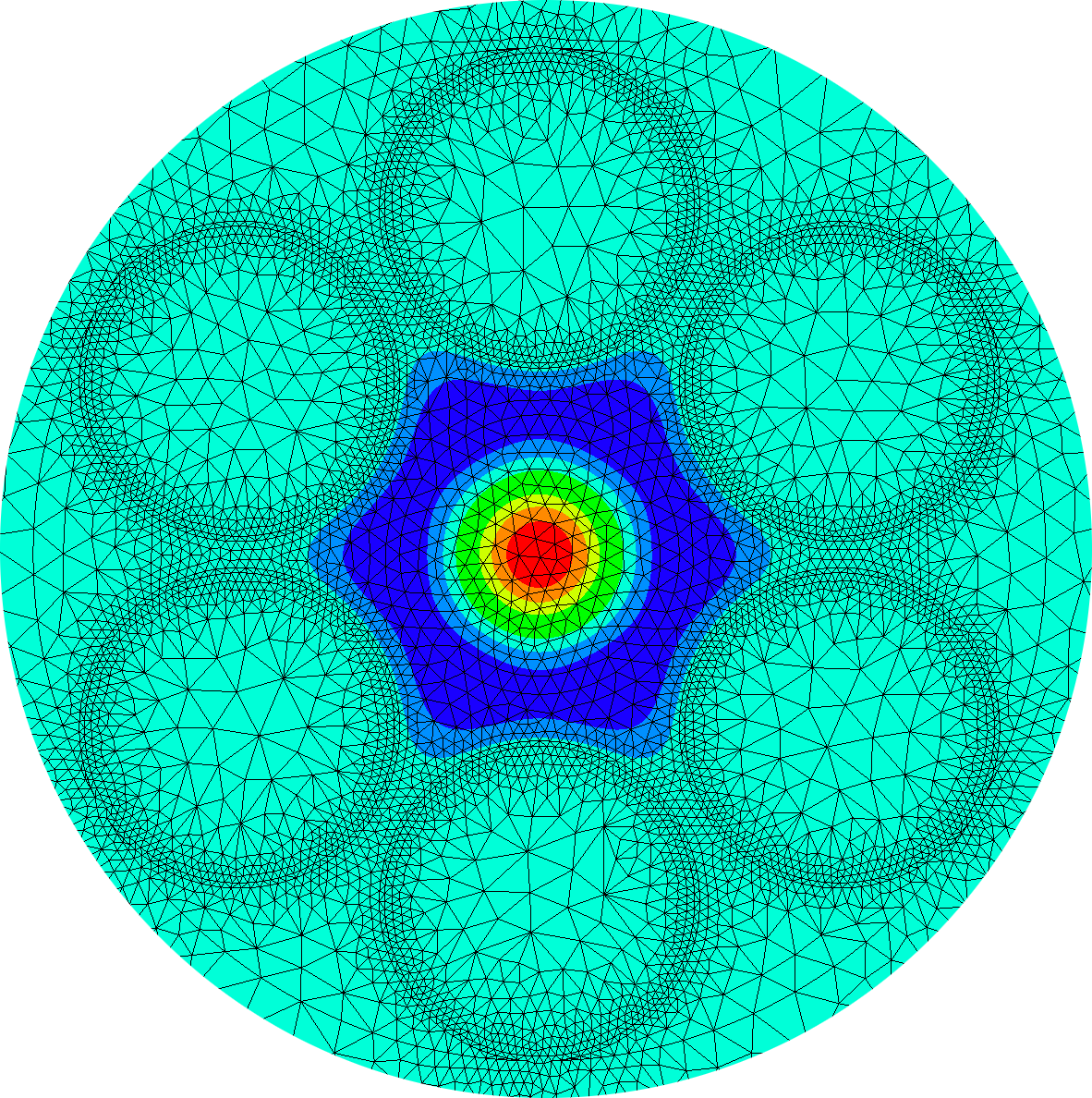
|
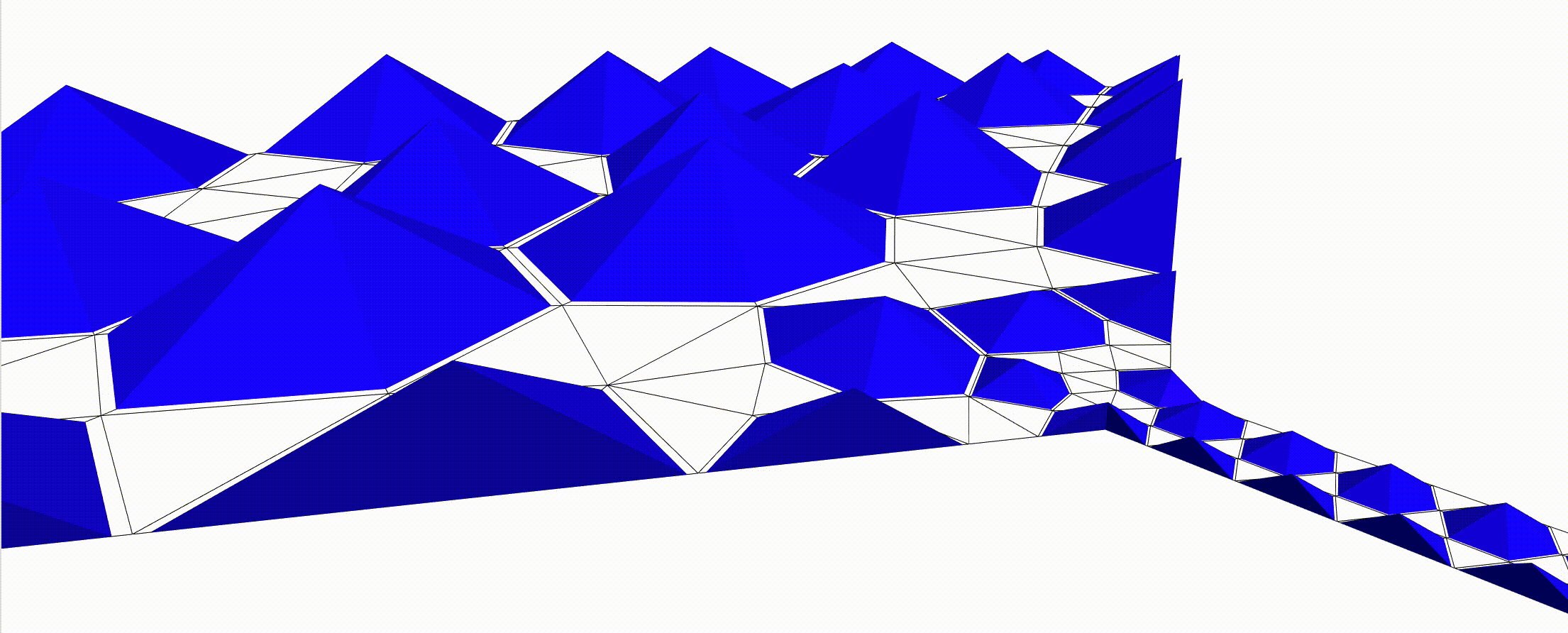
| An off-the-beaten-track idea for designing numerical schemes for hyperbolic systems is to use causality when subdividing the spacetime. In tent-shaped subregions of the spacetime, causality can be guaranteed easily by constraining the height of the tent pole. We then stratify a spacetime simulation region in an unstructured manner, by tent-shaped subregions, as shown aside. Methods built on such tents advance hyperbolic solutions asynchronously across unstructured layers. The partitioning into tents provides a rational design for local time stepping, maintaining high order accuracy in both space and time, and without any ad hoc projection or extrapolation steps. Notice how time step variability is automatically achieved in regions where large and small structures meet in the figure aside. Papers: [2022], [2021], [2020] Code: [github.ngstents], Tutorials: [github.io] |
High-power lasers are enabling some of the grand scientific experiments of our time (such as LIGO and NIF), not to mention their obvious demands in telecommunications and defense. Currently, one of the major impediments to scaling up power in optical laser fiber amplifiers is a phenomena called transverse mode instability or just TMI.
The above result, produced using our unique simulation tools shows how a laser beam's spatial coherence is lost due to TMI (right). The simulation shows how the coherence loss is correlated to the unwanted exchange of powers (left) between different transverse modes of the fiber. This result is obtained using the model of a thulium-doped fiber amplifier described in the paper linked here.
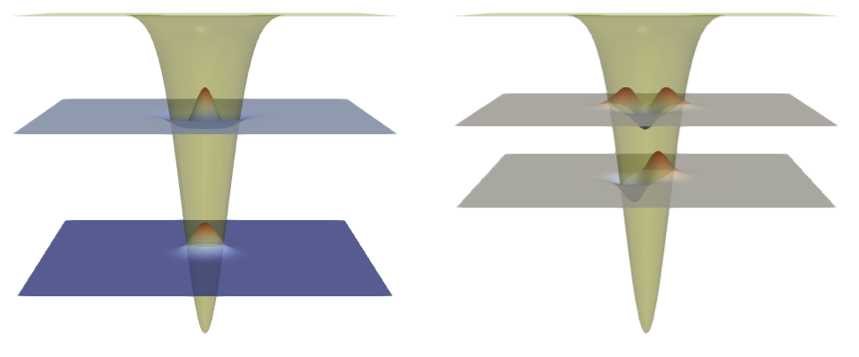
|
Eigenfunctions of differential operators
are important in many
fields. The picture aside shows plots of five
computed
eigenfunctions that are well localized within
a potential well (which is also shown overlaid).
Such targeted eigenspaces and accociated eigenvalue
clusters
can be approximated by a filtered
subspace iteration, popularly known as the
FEAST algorithm.
Departing from the usual approach of analyzing such algorithms
on discretized eigensystems,
we
studied
how errors due to the approximation of the
differential operator propagates through the
algorithm. We also offer
public domain codes
containing python classes for experimenting
with such algorithms.
|
|
Discontinuous Petrov Galerkin (DPG) schemes provide self-adaptive residual minimizing techniques. They have a built-in error estimator which can be used to drive mesh adaptivity even for complicated differential equations. The figures aside show how a directional wave is correctly captured by an adaptive DPG scheme, while an adaptive algorithm using the standard finite element method meanders when deciding where to refine. The preasymptotic stability (in addition to the usual asymptotic stability) of DPG methods have made them a popular choice in adaptive simulations. The DPG methodology was designed using novel combinations of "broken" Sobolev spaces and interface variables. Review of DPG methods: [2025]. |
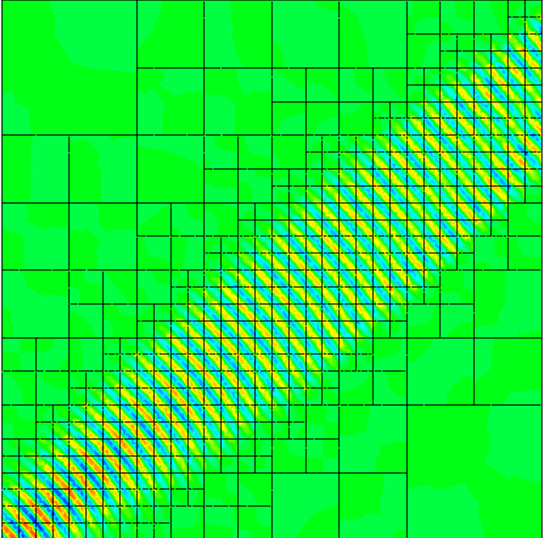
|
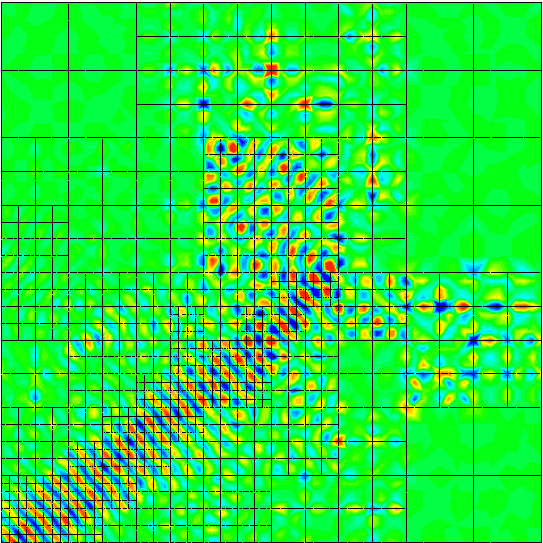
|
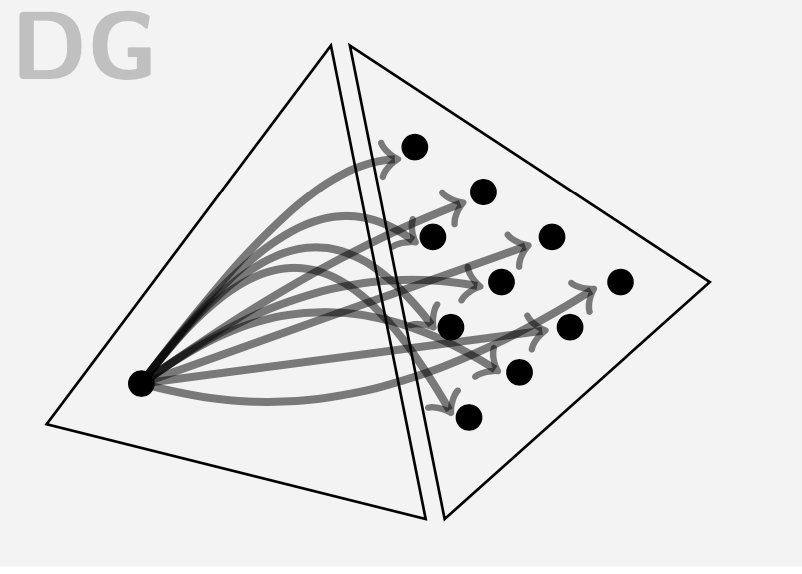
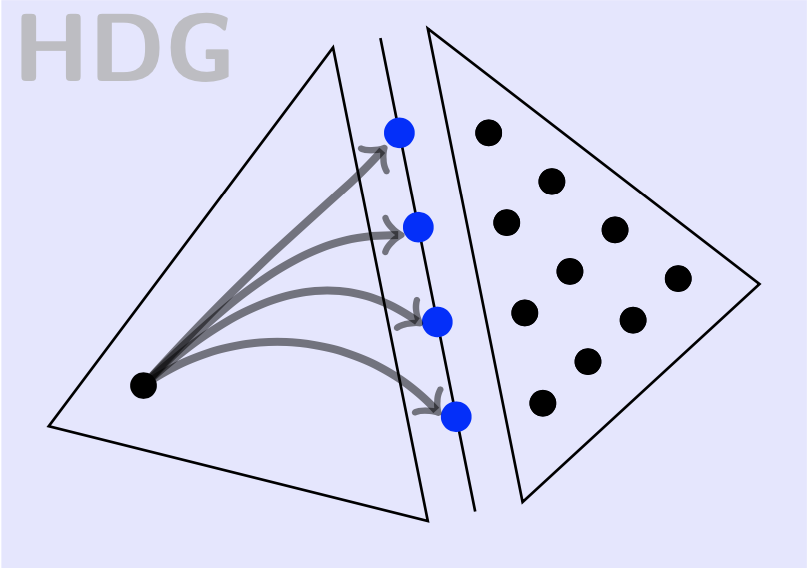
|
Hybridization,
in the finite element context,
is the process of formulating methods exploiting
unknowns at the interfaces of mesh elements. Our research
unearthed the popular
Hybridizable Discontinuous Galerkin (HDG)
methods, first introduced in our
widely read paper.
The essential difference in the design of a traditional discontinuous Galerkin (DG) method and an HDG method is pictorially illustrated aside. In traditional DG, a finite element node typically interacts with all nodes of an adjacent element. In contrast, in the HDG method it interacts only with interfacial nodes. This allows the elimination (or condensation) of all unknowns except the interfacial nodes, thus overcoming an old criticism that DG methods have too many unknowns. HDG's flexible and transparent stabilization mechanism, via an unconstrained stabilization parameter, enabled many researchers to extend the HDG method to a wide variety of equations. |